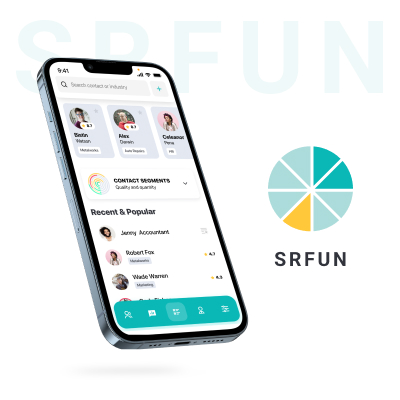Find high-quality contacts tailored to your needs

SRFN
At the start of the project, our client had identified a problem: they were dissatisfied with the quality of their professional network and desired a solution to quickly find high-quality contacts tailored to their needs. Their initial idea was to create a social network, somewhat similar to a LinkedIn clone. However, we wanted to explore this problem further to ensure we were addressing the right issues.
Workshop Steps
Tasks
Solution
At this stage, we validate the client’s idea and worked out with analytics frameworks
Several days of independent work by the workshop team. Prepare Func. map and MVP’s structure.
Created high-fidelity prototype that was simple yet closely resembled the final product
We selected a team for the project according to the required stack and level.
Stage 1: Idea Validation
To gain a deeper understanding of the client’s needs, we conducted a mini-workshop aimed at refining their vision. Together, we filled out the Lean UX Canvas, discussing their goals and objectives. This marked the first day of our collaboration.

Stage 2: Presale Works
Following the workshop, our proactive team embarked on several days of independent work. Based on the initial data, we created a Functional Map for the Full-Scale Solution. Using this map, we estimated the development costs and determined the minimum development team required. Additionally, we highlighted the key benefits of the Full-Scale Solution.
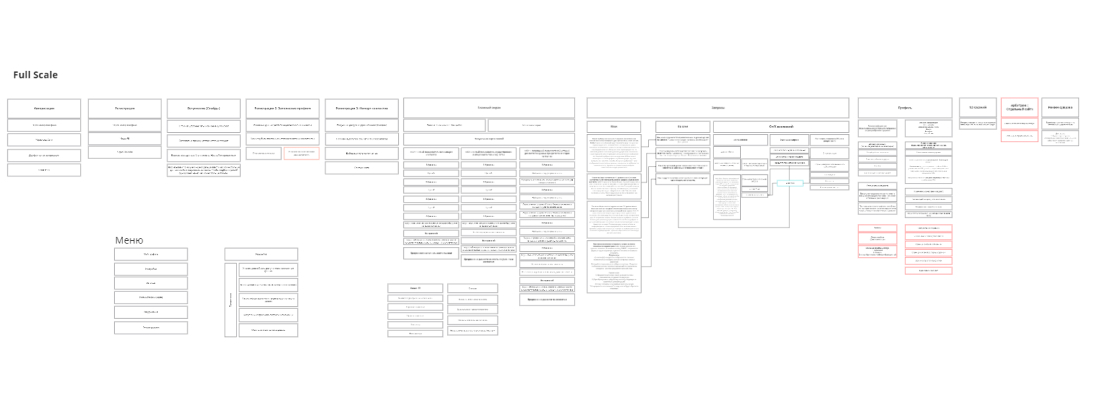
Full Scale Solution Functional Map
Approximate cost of Full-Scale Solution: 338,075 Euros Minimum implementation time: 2 years
MVP - Minimum Viable Product
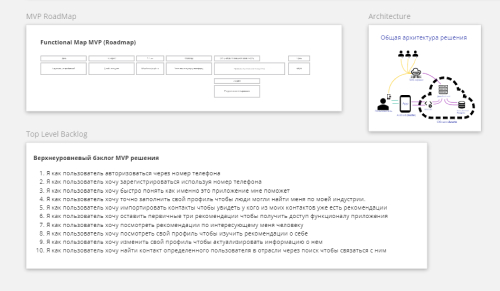
To validate the viability of the product, we selected the most controversial functionality, which formed the core of the concept. Our system was built around the digitalization of the “word of mouth” concept. When searching for someone in a specific field, users typically turn to their close contacts first, asking if they know anyone or can provide recommendations. This led us to ask: Will people be willing to leave feedback about others and recommend them?
The MVP concept was based on an address book that included social and professional ratings for individuals. Even if a user had a new contact, the application would display their rating if someone had previously evaluated them.
We created a Functional Map, Architecture, and Top-Level Backlog (User Stories) for the MVP.
For the MVP, we designed mockups to visualize its features and created a Lite Prototype.

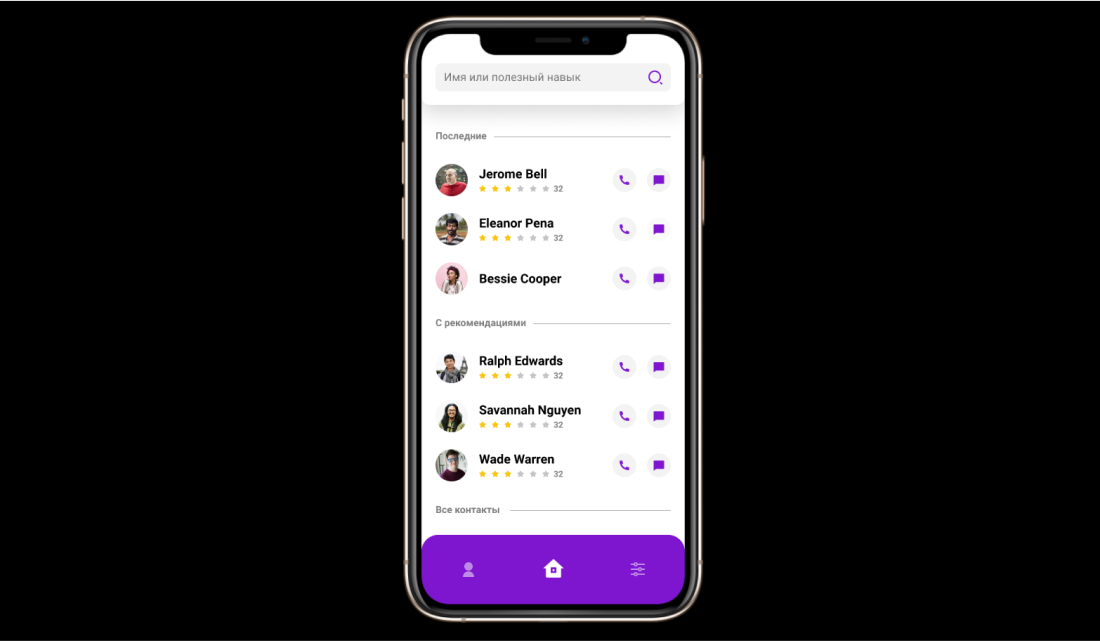
We neatly packaged all these elements into a presentation for the audience and potential angel investors.
Stage 3: Hi-Fi Prototype Based on Design Layouts
The final stage involved creating a highly detailed prototype. Prior to proceeding with the prototype, we developed a design that was simple yet closely resembled the final product.
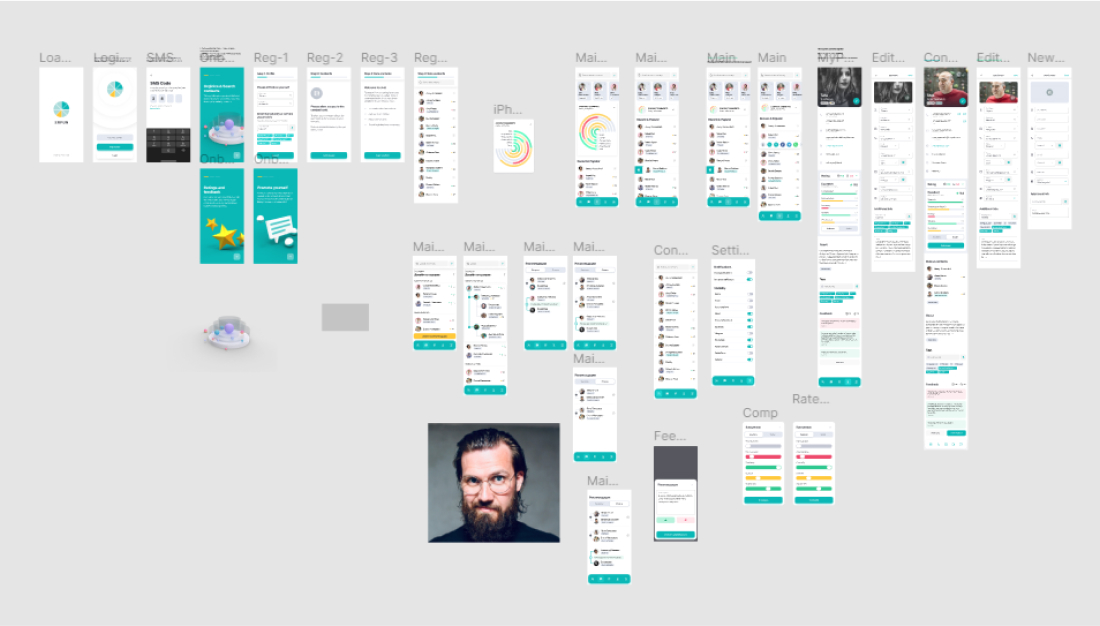
This means that it wasn’t just a series of screens but rather each important element behaved realistically. This provided a more immersive testing experience, surpassing the limitations of prototypes created solely with static screens. Moreover, users could directly test this prototype on their own devices, as most of the user flows requiring verification were implemented.
This means that it wasn’t just a series of screens but rather each important element behaved realistically. This provided a more immersive testing experience, surpassing the limitations of prototypes created solely with static screens. Moreover, users could directly test this prototype on their own devices, as most of the user flows requiring verification were implemented.


Before the final presentation to investors, the prototype underwent testing within the team and with stakeholders, as well as the target audience.
After the implementation, we created a Pitch Deck and prepared a presentation for investors. This presentation contains precise calculations for developing a similar MVP, including timelines, technology stack, and the required team size. It enables the client to engage in a more concrete discussion, demonstrating a transparent development process.
Stage 4: Dev Organization
In the fourth stage, having secured A-round investments, we organized the development team necessary to kickstart the project.
